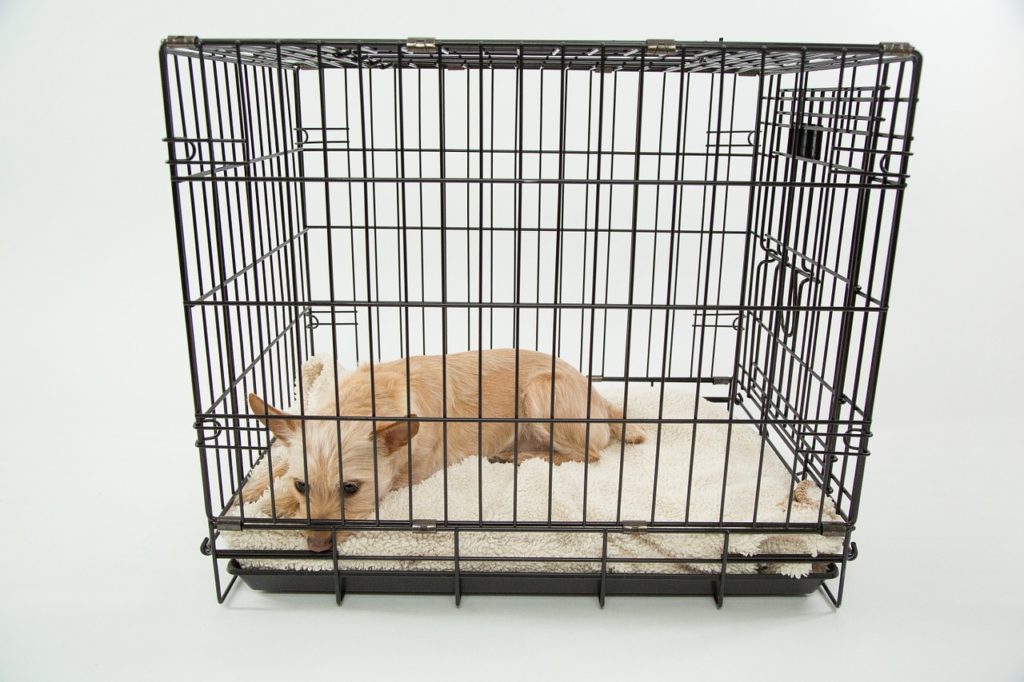Crate Training a Puppy: Suggestions for Success!

Courtesy: PourquoiPas @ Pixabay
You have a new puppy. Great! Now, you need to give your canine friend the love, attention, and training needed to thrive. However, introducing a puppy to the domesticated lifestyle takes time and patience. Your new pet has a lot to learn about living in a human household. There may even be multiple steps involved in learning the basics, such as housebreaking. Sometimes, pet owners opt for crate training a puppy to teach them bladder control and keep them from destroying the house.
When done properly, crate training can be a positive experience and beneficial process for pets.
Create a Den-Like Space
The key to making your pets crate a place they want to be is to turn it into a den. Animals naturally want to have a hideaway where they can seek shelter and feel safe. This is true even for domesticated pets within your home.
Think about the placement of your pet's crate, how big it is, and what kind of objects you'll put into the crate. It's a good idea to put your pet's crate in an area of the home that is used frequently. Dogs often like to spend time with the pack and you are part of their pack. If you stick them in a crate in the back room. The dog will feel left out and may whine more.
Of course, where the crate is positioned within the room is also important. You don't want the dog to feel exposed or trapped. Consider putting the crate along a wall or in a corner where they can observe the entire room.
Ideally, the crate should be large enough for your pet to enter and exit freely, and even turn around inside. However, you don't want it to be so large that they can move around. The extra space may seem like an optional area where they can go to the bathroom. This is a big no-no when you're trying to house train your pet.
Give your pet some nice bedding to sleep on, such as a comfy blanket or even pillow. You may also want to pick up a light throw or blanket to place over the top and sides of the crate. This will create a more protected and cozy feeling when crate training a puppy. Just remember to leave the front exposed so your pet can see what is going on in the room.
Make Slow Introductions When Crate Training a Puppy
Avoid bringing the crate home and just shoving your pup into it right away. This is a scary new experience for dogs who are only familiar with cages at the pet store or animal shelter. Instead, take the time to introduce your pet to their crate.
Try setting the cage up and leaving the door open. Then, walk away and let your puppy investigate this new object at their leisure. You might want to give them in a day or two to get used to the presence of the crate before moving forward.
Make a Positive Association with the Crate
The next step is to help build a positive association with the crate for your pet. Try placing a few treats inside the crate to lure your pet in for a snack or their favorite toy. Remember not to close the door or force the puppy to stay in the crate. At this point, you're simply getting them used to being inside and thinking of the crate as a place where they find good things.
Every time your pet enters the crate or when you place a treat inside, you might want to associate this act with a command, by speaking it out out loud. The command can be 'go to your crate' or something as simple as 'kennel'. This helps gradually train your dog to recognize the word or phrase with entering their crate.
Be careful not to give the puppy rewards for leaving the crate. For instance, praising your dog after they come out of the crate. Instead, put the focus on entering the crate and being inside it.
Gradually Increase Time in the Crate
As your dog gets used entering the crate, you can start increasing the time they spent inside. Begin with short increments, such as 10 minutes or so. You might even want to give your pet his meal in the crate and close the door while they are eating. Be sure to stay close and open the door as soon as the dog finishes, so he or she is free to leave.
Increasing time in the crate is a tricky process. If you push too far, your pet gets upset and starts crying. He or she may even start to associate the crate with negative things, such as being restrained. When this happens you might want to cut the time back until your pet feels comfortable again.
Ten minutes at a time can gradually be increased to 15 minutes, 30 minutes, an hour, and so on. You may need to practice crating your pet several times a day at first. Feel free to experiment with leaving the room for a few minutes at a time to see how your pup does. Just remember to stay close enough that you can hear and let your puppy out if they get upset.
How Much Time is Too Much?
There are people who leave their pets crated all day when at work. However, leaving the dog crated for up to eight hours at a time is not good for your pet. Dogs can become anxious, upset, and even go a little stir crazy when trapped in a confined space. This tool is really meant for crating rambunctious pets overnight, when guests are over, and for short periods of time when you are housetraining a puppy.
Well-behaved, house-trained adult dogs probably don't need to be crated when you are at work. However, it is always a good idea to teach them the command and have the crate available should the need arise for visitors, or trips to the vet.
To ensure that your pet grows up to be a truly happy, friendly dog, you might want to consider further training. The Obedience Training video series uses the RAPT training method to show you specific techniques and methods for a better human-dog partnership. You'll even receive a bonus 30-minute video, the "Secrets Behind Crate Training" when you order.





